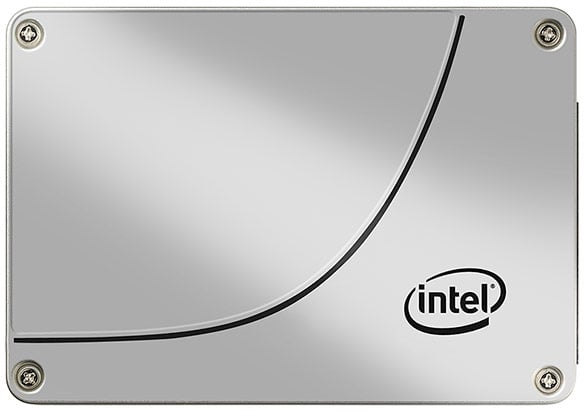Intel Solid-State Drive DC S3700 Review
Introduction and Specifications
Intel set the solid state storage market ablaze when it released the X25-M a few years back. Up until that point, solid state drives had steadily been improving in performance, but there was no real dominant player in the space. When the X25-M arrived though, with its proprietary controller, firmware, and NAND, it blew the doors of the competition and remained “the” drive for enthusiasts to own for quite some time. The X25-M was relatively pricey, but its performance was unrivaled.
However, Intel eventually moved away from its proprietary controller technology. The second gen X25-M used the same Intel-built controller as the original drive, but subsequent SATA 6Gbps offerings used Marvell (Intel SSD 510) or SandForce (Intel SSD 520) controllers. We heard rumblings for quite some that an Intel-built SATA 6Gbps SSD controller was in the works, but nothing ever materialized in the consumer space. In the enterprise space, Intel continued to leverage its 3Gbps controller in a number of products, including the SSD 710 which we reviewed here.
The new Intel DC S3700 we’ll be showing you here, however, does feature a new Intel-built, SATA 6Gbps controller, but it’s not the flat-out speed demon its predecessor was when it was released. Make no mistake, the DC S3700 is a high-performance drive, but it targets data center (hence the DC in its name) and enterprise applications. This Intel controller and SSD is designed to offer more consistent, lower latency performance than previous generation Intel SSDs. Take a look...

|
Capacity:
Compliance
|
Compatibility
|
The Intel DC S3700 will be offered in 100GB, 200GB, 400GB, and 800GB capacities in the more common 2.5” form factor, but only 200GB and 400GB models will be offered in the smaller 1.8” form factor.
The DC S3700’s enclosure looks much like previous Intel-built solid state drives. It’s a basic, metal case with a 7.5mm Z-Height, adorned with a couple of decals detailing the drives capacity and a few specifications. If you’ve seen any of Intel’s recent SSD offerings, the DC S3700 will look familiar to you.
Intel DC S3700 800GB Solid State Drive
Inside the enclosure, however, there are plenty of new things to see. There are few noteworthy items on the PCB worth pointing out. First, obviously is the new controller. The controller used in the DC S3700 family of SSDs supports 8 NAND channels, AES-256 encryption, and has a native SATA 6Gbps interface. The controller is paired to 256MB (or 512MB in the case of the 800GB drive) of DDR3-1333 DRAM cache and there are also a couple of capacitors on-board designed to power the drive just long enough to write any unsaved data to the NAND in the event of a power failure. We should also point out that the drive monitors these capacitors, and should they fail, write buffering is automatically disabled and the drive will report a S.M.A.R.T. error.
The actual NAND used in the drive is Intel 25nm HET-MLC (High Endurance Technology – Multi-Level Cell) NAND, with total capacities that vary from drive to drive. The 200GB model is outfitted with a total of 264GB of NAND, with the additional capacity used for wear leveling, bad block replacement and other proprietary and maintenance-related features. The 800GB drive has a total of 1024GB of NAND on-board.
Although the controller used in the new DC S3700 family has a SATA 6Gbps interface, Intel’s focus wasn’t on maximum sequential throughout with the drives. Instead, Intel’s focus was on, reliability, consistency and low latency. Intel claims total IOPS shouldn’t vary by more than a few percentage points, regardless of the drive’s state, and that it’s able to service 99.9% of 4K random IO request in .5ms (QD1). The drives are also able to handle 10 full span, random writes per day for five years, which works out to roughly 14 petabytes of data writes for the 800GB drive.






